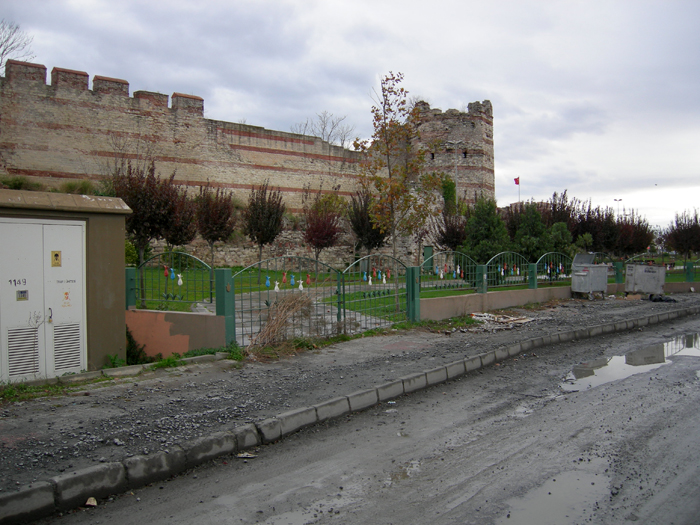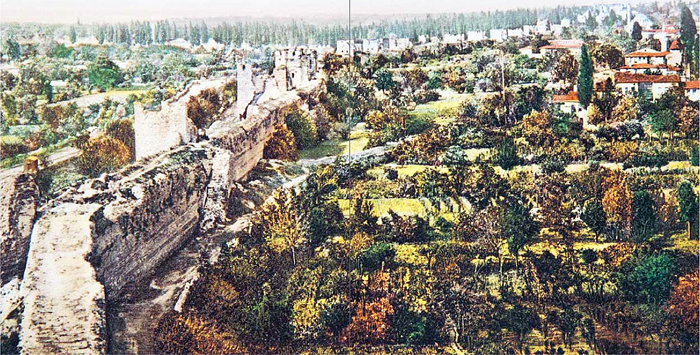Urban Agriculture and the Transformation of Yedikule
[widgetkit id=12973]
The public gardens of Yedikule in Istanbul are not only one of the oldest intra-urban agricultural areas of Istanbul (more than 1500years old), but also a fragment of one of the largest green spaces of the city. They are located close to the ancient city wall (built between 413 and 412 B.C.). In former times there were moats to protect ancient Byzantine from its numerous enemies during sieges. After the conquest of Constantinople by the Turks (1453) the walls and the moats slowly lost their importance.
Keeping in mind being in an over 15 million mega polis one gets a raw experience when walking by foot and having green fields on your right side for the complete route.
It is really rough, that the building up of a disneylandish park with colourful metal tulips on the fences is strongly breaking the UNESCO criterias for Istanbul as part of Worldheritage:
“5. to be an outstanding example of a traditional human settlement, land-use, or sea-use which is representative of a culture (or cultures), or human interaction with the environment especially when it has become vulnerable under the impact of irreversible change; […]”.
The “vulnerable” act was caused by the cities authorities itself. The demolution is not “irreversible” though, since it is more a decorative intervention until now. Nevertheless it is not taking care of the historical identity of Yedikule at all. Sadly the public resistance against the demolition of public gardens was limited on academic articles in some Newspapers.
Moreover it is quiet contradictious, that the city authority modified some of these gardens into a public unused space just a few weeks after the Gezi Park Protests. The reconstruction of an osmanic barrack containing a shopping mall, which was planned for Gezi Park, and the planting of artificial tulip-beds are showing the same intention for these urban spaces. The creation of an artifical Ottoman make up for the city instead of preserving useful rooted structures for public use.
Nowadays the urban transformation around the city wall is more caused by land saling for private interests. For example in Sulukule, where one of the oldest Roma settlements had to made place for chic new townhouses.
This comment on the over 100 year old photograph shows an interesting parallel to the contemporary situation:
“A glance at the north from Yedikule. In this photo, the pastoral feature of the interior of the walls, preserved partially, is seen. In 1909, the Sultan endorsed an act passed by the parliament, stipulating the demolition of the walls (of the City Walls) and their sale for the public interest; but this act was never implemented because of massive objections raised against it. The making of modern roads outside the walls has changed the area very much and this part of the walls lost their characteristics as a result of a controversial restoration. (From Nezih Başgelen’s Archive)” (Source: Surlarin Öte Yani Zeytinburnu. On the other side of the city walls. Editor: Burçak Evren. Zeytinburnu. May 2003.)


